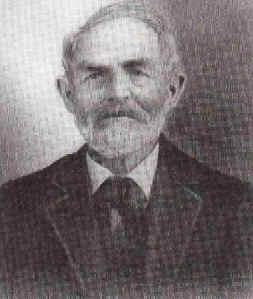History
The Valley below the San Tan Mountains had fertile lands. This attracted the Hohokam, a Native American tribe, who were the first to establish communities in the area. The homesteaders then arrived and began to establish farms and ranches along what was called the Queen Creek Wash. [1]
In 1924, Charles Rittenhouse, a land developer, established the Queen Creek Farms Company. The wells in his company pumped 2,150 gallons of water per minute, which helped make his 1,000 acres of land very productive. A railroad was soon established in the area and a small town grew around the railroad where it could ship the produce and cotton which grew in the farms. The town was called Rittenhouse because the Railroad ran near Rittenhouse and Ellsworth roads. The residents of the area, wanting to travel to Phoenix by train, would often flag down the train to get a ride.
In the eastern part of Arizona there is a mountain where the Silver King Mine is located. There is a creek at the base of the mountain which was called Picket Post Creek. Eventually the creeks name was changed to Queen Creek. The creek ran from the mountain and into the area of Rittenhouse.
It wasn't long before the farmers began to rely more on the use of automobiles and trucks than on the railroad. The use of the railroad declined and the people began to call and identify the area as Queen Creek. [2] The town's name officially was changed to Queen Creek in 1947, with the establishment of the Queen Creek Post Office. The town, which was incorporated in 1989, has the unique distinction of having part of the town located within Maricopa County and another part within Pinal County. [3]
Immigrants from Mexico moved into the area and picked the local cotton crop by hand until the 1920s when the cotton gin came to Queen Creek. In the 1940s the United States set up a German prisoner-of-war camp by Rittenhouse Road. The prisoners, together with immigrants from the Philippines, worked as farm laborers in local fields. [1]
In 1990, members of the community established the San Tan Historical Society. The mission of the society is to preserve the area's heritage. The society collects, preserves, documents, and displays the histories and artifacts of the Chandler Heights, Combs, Higley, and Queen Creek Communities. There are various properties in the town of Queen Creek which are considered historical and have been included either in the National Register of Historic Places or listed as such by the San Tan Historical Society. [4]
The Town of Queen Creek, however, lacks the authority to deny a demolition permit. Therefore, the owner of a property, listed either in the National Register of Historic Places or considered historical by the San Tan Historical Society, may demolish the historical property in question if they so desire. An example of this is the historic Water Tower which was built in 1952 for the Producers Cotton Gin. The water tower was to be demolished, but in 1999, the Schnepf family purchased it and moved it to the grounds of the Schnepf Farms. According to Jim McPherson, Arizona Preservation Foundation Board President: "It is crucial that residents, private interests, and government officials act now to save these elements of our cultural heritage before it is too late." [5]
The historic Schnepf Farms is located five miles southeast of the town. The area was purchased by Jack and Maude Schnepf in 1941. They were among the first settlers to buy a cotton picker, put in cement ditches and dig sumps to catch and recycle wastewater. Jack and Raymond Schnepf invented and manufactured the aluminum irrigation tube. As neighboring farm owners sold their properties to developers, the Schnepf Family purchased unique farm buildings from these neighboring farms and incorporated them on the Schnepf Farm to preserve the history of these farms. [6]




































